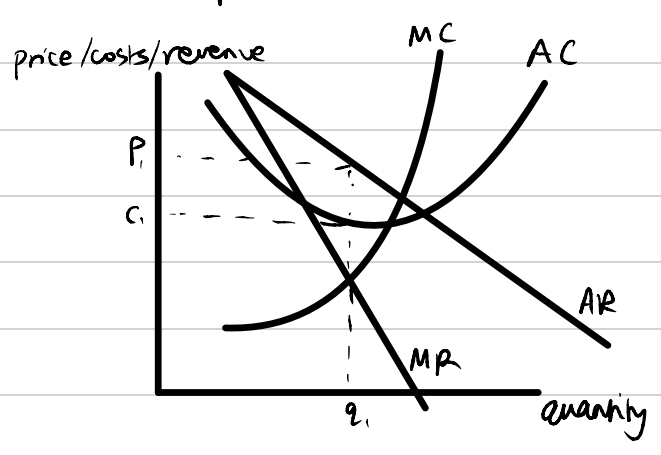A pure monopoly is a sole seller in a market, and a firm can have monopoly power if it has a high market share. Monopoly markets have high barriers to entry, high product differentiation, and imperfect information.

The diagram shows a high price of p1 and a low quantity of q1. The firm chooses to profit maximise (where MC = MR). The firm makes supernormal profit shown by the shaded rectangle.
One disadvantage with a monopoly is that they are not productively efficient. This is because, at q1, MC does not equal AC. This means that the firms are not minimising costs. Firms in a monopoly have no incentive to minimise costs, as they can maximise profits even with higher costs. Monopolies can also make more profit by raising prices rather lowering costs due to their high market share and the lack of competitors.. This lack of incentive to minimise costs is called X-inefficiency.
A second disadvantage is that a monopoly is not allocatively efficient. This is because, at q1, AR does not equal MC. This means that the price is far higher than marginal cost, which shows that firms are overcharging consumers. At AR = MC, there would be a fair distribution between consumer surplus and producer surplus but at q1 there would be far greater producer surplus and very little consumer surplus.
However, a monopoly is the only market structure which is dynamically efficient. This is when a firm makes supernormal profit in the long run and re-invests it to improve products. For example, Apple have made supernormal profit in the past and that has allowed them to improve and innovate now.